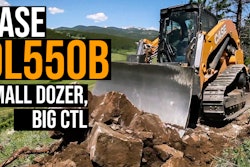
Valuations of assets and property are naturally an important part of the process, they agree. “The key is to come up with a consistent valuation strategy for both dealers so they’re consistent and comparable,” Baker says.
But what Baker and Johnson emphasized during their presentation at the January Associated Equipment Distributors’ Summit is that formulating a comprehensive merger strategy – first – will create a foundation for managing all expectations on both sides of the would-be partnership.
Keep it real
Two steps help dealer principals keep the merger process and their expectations realistic from start to finish, according to Baker and Johnson: (A) honest self-assessment; and (B) clear conversations on key issues, which should eventually end up in a letter of intent (LOI).
Self-assessment means asking yourself, “‘Are we ready to be part of something bigger than just our family or our one or two stores that we are right now?’” Johnson explained. “To some extent, it’s okay if you say ‘no, we’re not.’ It’s not okay forever because you might get left in the dust,” he added. “Sometimes the deal at hand is the best deal you’re going to get. But sometimes there’s a better deal coming, and it’s okay for you to wait.”
Transparent conversations between the two dealer owners should precede the writing of an LOI, says Baker. And, to be clear, the Baker and Johnson standards for letters of intent are high. The more details the better because this will likely be the document you share with your manufacturers when presenting the merger plan to them.
Here’s their shortlist of what to get on the table with your prospective merger partners and into your LOI before you dive into the valuation process:
Organizational Structure
Who’s going to be the CEO? Who are the shareholders and what will their roles be? How is the board going to function? These are necessary discussions and decisions as part of the overarching merger strategy. Compensations should come into it, as well.
Baker says the CEO is the one who leads the management of the organization, which may sound obvious, but when two strong, family-business leaders come together, for example, but only one will lead in the future, it’s a potentially big hurdle. Talk about it early and document your conclusions in the LOI.
Decisions about shareholders and the board are going to have their own set of complexities, particularly for merging family-owned companies. Baker says basic parameters now will lay the groundwork for future behaviors.
“The primary job of shareholders is to elect the board of directors,” he says. Whether they’re in the business or not, it’s not the role of shareholders to have a say in who the CEO is, he adds, or to demand store discounts, or to opine about other company policies.
The board that shareholders appoint will ideally comprise five to seven people who will set the vision and make high-level strategic decisions for the merged company, according to Baker. “Rarely do we have all the owners on a board; maybe in a closely held company you do, but by the time you get multiple generations of families involved, you’re just getting too many people. You can’t sit around a table of 12 people and make decisions.”
Buy-sell agreements
In a nutshell, this is the future pathway for parting ways. One day, either because of a disagreement or because one of the parties is retiring, the owners who merged their companies into one may need to go in separate directions. A buy-sell agreement outlines how that must be done – if the parties are in disagreement when the time comes.
Johnson cited an instance in which one owner was in jail; in another scenario one owner was supposed to retire at 65 but didn’t. In either case, buy-sell language written at the beginning of their story helped ease a difficult situation.
Bear in mind, buy and sell agreements written today don’t preclude further negotiation down the road, Baker adds. You can always talk and come up with a new solution. But in case you can’t, the buy-sell is a great stop-gap, says Johnson.
Deal breakers
Every deal has them. Or call them sacred cows, because almost everyone’s going to have a beef about something. “That’s why we like to start with strategic planning, not with valuation,” said Baker.
What are the big hurdles that you’re not willing to compromise on?
“We had somebody tell us the whole deal was great, blah, blah, blah,” Baker recalled, “and then he said, with a stone-cold face, ‘All I can tell you is we’re not driving Dodges.’ Turns out the guy was kidding, but there are often deal breakers that need to get put on the table really early on.”














